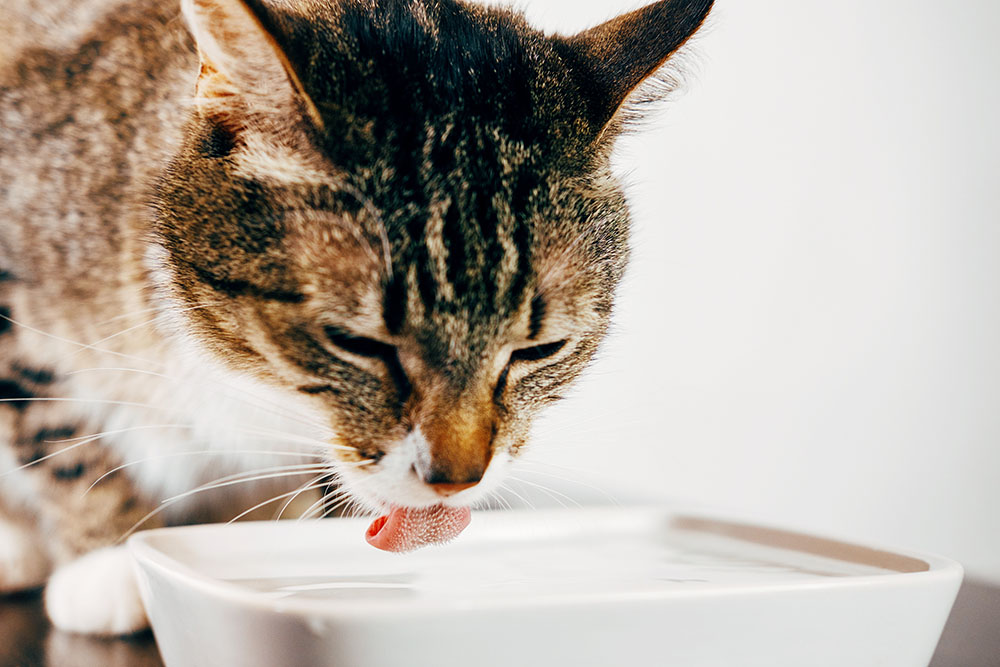Diabetes, a condition which affects blood sugar levels, is well known in people. But did you know that cats and dogs can be diabetic too? In fact, diabetes is one of the more common hormonal disorders in pets! Read on to find about more about diabetes in pets, and how we can manage it.
What is diabetes?
Diabetes mellitus (usually just called diabetes) is a hormonal condition which results when there is not enough insulin in the body. This may be an ‘absolute deficiency’, where not enough insulin is made, or a ‘relative deficiency’ where there is insulin available, but the body cannot respond to it (insulin resistance) – or a mixture of both!
Insulin is a vital part of sugar regulation in the body: both in maintaining suitable blood levels, and in aiding the transfer of sugar from the blood to the cells that need it. Lack of insulin or insulin resistance both mean the sugar levels rise dangerously high in the blood. Cells also don’t then receive this sugar for energy, so start breaking down fats and proteins instead. This process can result in by-products called ketones, which can make pets very ill.
Cats vs Dogs
Cats and dogs can both get diabetes, but they tend to get different types.
Dogs commonly get a form of diabetes where they cannot produce enough insulin, usually due to immune destruction of the pancreatic cells which produce it. This is similar to Type 1 diabetes in people.
Cats are more similar to Type 2 diabetics, where the body responds poorly to insulin, often combined with a lack of production. There are certain factors which make cats more prone to becoming diabetic as well as genetics, including obesity, a sedentary lifestyle, some medications such as steroids, and some illness such as pancreatitis.
Symptoms of diabetes
Diabetic pets usually have one or more of five classic symptoms:
- Increased thirst
- Increased urination
- Weight loss
- Increased appetite
- Lethargy/tiredness
Diabetes can cause other symptoms as well, such as vomiting, diarrhoea, weakness or collapse and a higher frequency of infections.
Diagnosis and Treatment
If your pet has any symptoms of diabetes, take them to your vet. Diabetes can be diagnosed based on symptoms, a physical examination and blood and urine testing.
Diabetic patients usually require insulin, given by injection once or twice daily. These are usually given just after a meal, to reflect natural insulin releases which occur when eating. There are various different types of insulin and your vet can discuss which would suit your pet best. Injections are given into the scruff of the neck or other area of loose skin, either by traditional needle and syringe, or by using a pen-type automatic injector and cartridge.
Your pet’s starting dose will be calculated based on their weight but will need to be carefully monitored and adjusted over the first few weeks, as all individuals have slightly different requirements. Insulin is a prescription drug which should be sourced from a reputable supplier, as it usually needs to be kept in chilled conditions and handled carefully.
Diabetics also do best with a good routine. Careful weight management, controlled feeding, and exercise schedules are all helpful for best management of this condition. Your vet may recommend feeding a good quality diet which has a good fibre and protein levels without too much carbohydrate. Diabetic patients require regular monitoring of symptoms, weight and glucose levels, both at home and with regular veterinary appointments.
Remission
Whereas in dogs, diabetes is a chronic condition requiring lifelong insulin injections, a percentage of cats can achieve diabetic remission. As they tend to have Type 2 diabetes, cats can hugely reduce their need for insulin with changes to their weight and diet. A strict feeding and diet protocol will likely be suggested, and some cats will make significant progress with dietary change alone. Others will need continual insulin, but their requirements may decrease as their body condition improves.
Prognosis
Untreated diabetics can become extremely unwell. If their body shifts to using muscle and fat for energy instead of sugar, the production of ketones can cause diabetic ketoacidosis, an acute medical emergency for pets. On the other hand, giving too much insulin can carry the risk of inducing hypoglycaemia (low blood sugar), with symptoms including lethargy, weakness and collapse. Other complications of diabetes can include pancreatitis, urinary infections and cataracts.
Diabetic pets who are started on regular insulin injections, a good diet, and strict routine often do very well and can go on to live long and healthy lives. However, the treatment takes a fair amount of commitment, and some diabetic patients are more refractory to management than others and require an intensive period of stabilisation.





